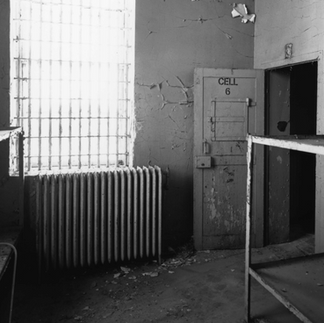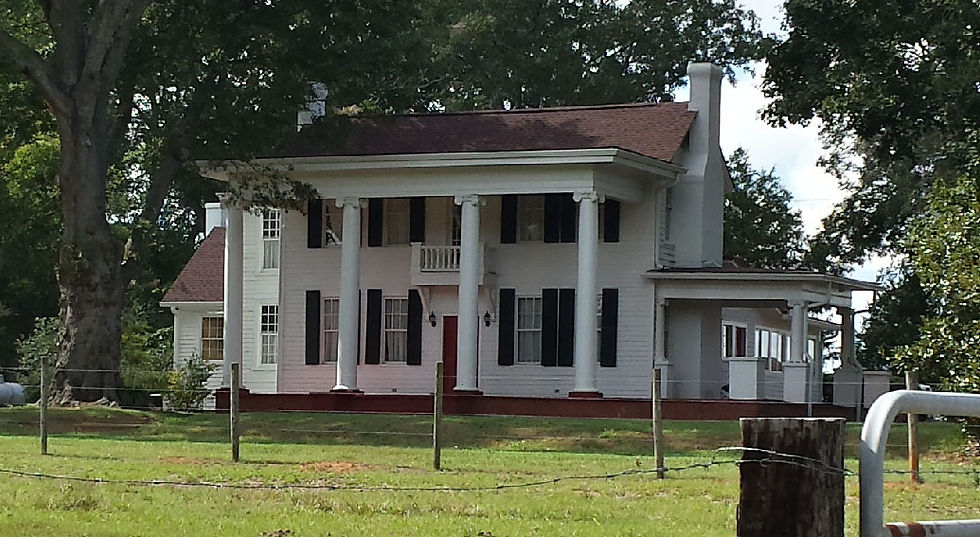Historic Griffin, If These Walls Could Talk: The Old Spalding County Courthouse
- Maggie Saunders
- Sep 23
- 3 min read
At the corner of East Broad and South 5th stands one of our community’s most remarkable survivors: the old Spalding County Courthouse. Built in 1860 as the county’s very first courthouse, this building has witnessed more than 160 years of local history, serving as the heart of government, later transformed into the county jail, and finally repurposed for office use.

Historic Snapshot of The Spalding County Courthouse:

The courthouse was built at a turning point in Griffin’s history. Spalding County had just been carved out of Pike, Henry, and Fayette counties in 1851, and by 1860, construction was underway on the county’s first permanent seat of government. The Inferior Court commissioned Columbus Hughes, an architect from New York who had designed the old Atlanta City Hall, to draw up plans. David Demarest, a New Jersey-born builder who left his mark on several of Georgia’s antebellum landmarks, was awarded the construction contract at the sum of $12,000.
The courthouse they created was designed in the Italianate style, a style not widely seen in antebellum Georgia, making it especially rare today. Its balanced proportions, detailed brickwork, and distinctive window treatments set it apart from other civic buildings of the time. In fact, of the 132 Georgia counties in existence in 1860, only fifteen courthouses from that era still survive. Ours is one of them.
Community Connections:

For more than fifty years, the courthouse was the hub of civic life in Spalding County. It was here that deeds were recorded, taxes were paid, wills were probated, and marriage licenses were issued. The Superior Court met here, and the grand jury deliberated under its roof. For decades, it was the building where every major civic decision passed.
The courthouse is also linked to one of Griffin’s most famous individuals: John Henry “Doc” Holliday. Before moving with his family to Valdosta, young Holliday is said to have conducted business in this very building. Later in life, he would become legendary as a gambler, gunfighter, and figure of the Old West, but his roots ran straight through Spalding County and its courthouse.
Evolution Over Time:
By the early 1900s, the old courthouse was no longer meeting the county’s needs. In 1911, a new courthouse was built, and the original structure was slated for a dramatic transformation. In 1914, it reopened as the Spalding County Jail.
Newspapers at the time marveled at the renovation, calling it the “most modern jail in the state” and noting that it looked “more like a palatial residence than a place wherein to take care of prisoners.” The conversion was carried out with jailworks provided by the Pauley Jail Works Company of St. Louis, a firm that supplied jails across Georgia and the South.
For seventy years, until 1984, the old courthouse served as the county’s jail. It housed not only inmates, but also the jailer and his family. Inside, there were isolation cells, facilities for both men and women, and even a trapdoor intended for hangings. While changes were made over the years, much of the jail’s steel and interior arrangement remain intact, layered atop the bones of the courthouse.
After the jail was decommissioned, the building was adapted again for county office use. By then, its historic significance was becoming more widely recognized, and in 2001, the building was officially listed on the National Register of Historic Places.
Looking Ahead:
Today, the old courthouse is owned by the City of Griffin. Though its next chapter has not yet been written, the building’s potential is undeniable. It has been the subject of reuse studies in the past, with proposals ranging from museums to archives to civic spaces. What is certain is that it stands as one of the most important surviving pieces of Griffin’s architectural and civic history.
We are hopeful this old courthouse is brought back to life. There is a wonderful opportunity to honor the courthouse’s past, while shaping its future. With care and vision, this rare landmark could once again become a place where people gather, learn, or make memories in Downtown Griffin.
Invitation to Explore
The story of the old courthouse is just one of many that make Griffin and Spalding County such a special place. If you’d like to discover more about our local history, or support our efforts to preserve and share it, we invite you to explore our website, become a member, or join us at an upcoming program.







Comments